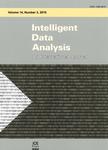版权所有:内蒙古大学图书馆 技术提供:维普资讯• 智图
内蒙古自治区呼和浩特市赛罕区大学西街235号 邮编: 010021

作者机构:Wuhan Univ Technol Sch Comp Sci & Technol Wuhan Hubei Peoples R China
出 版 物:《INTELLIGENT DATA ANALYSIS》 (智能数据分析)
年 卷 期:2022年第26卷第4期
页 面:873-891页
核心收录:
学科分类:08[工学] 0812[工学-计算机科学与技术(可授工学、理学学位)]
主 题:Graph neural networks network representation learning deep learning mathematics of computing graph algorithms
摘 要:Recently, several studies have reported that Graph Convolutional Networks (GCN) exhibit defects in integrating node features and topological structures in graphs. Although the proposal of AMGCN compensates for the drawbacks of GCN to some extent, it still cannot solve GCN s insufficient fusion abilities fundamentally. Thus it is essential to find a network component with stronger fusion abilities to substitute GCN. Meanwhile, a Deep Adaptive Graph Neural Network (DAGNN) proposed by Liu et al. can adaptively aggregate information from different hops of neighborhoods, which remarkably benefits its fusion abilities. To replace GCN with DAGNN network in AMGCN model and further strengthen the fusion abilities of DAGNN network itself, we make further improvements based on DAGNN model to obtain DAGNN variant. Moreover, experimentally the fusion abilities of the DAGNN variant are verified to be far stronger than GCN. And then build on that, we propose a Deep Adaptive Multi-channel Graph Neural Network (DAMGNN). The results of lots of comparative experiments on multiple benchmark datasets show that the DAMGNN model can extract relevant information from node features and topological structures to the maximum extent for fusion, thus significantly improving the accuracy of node classification.